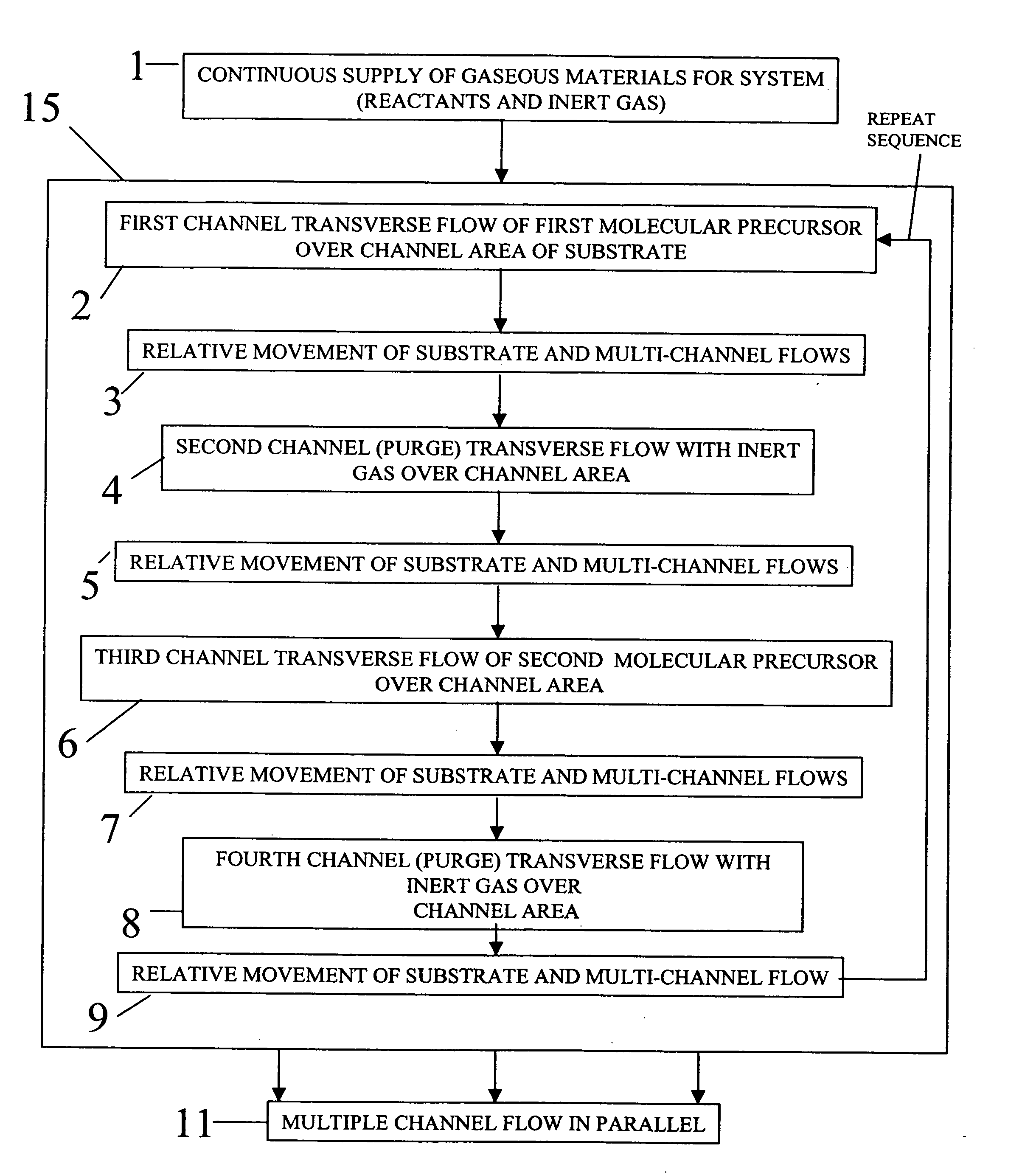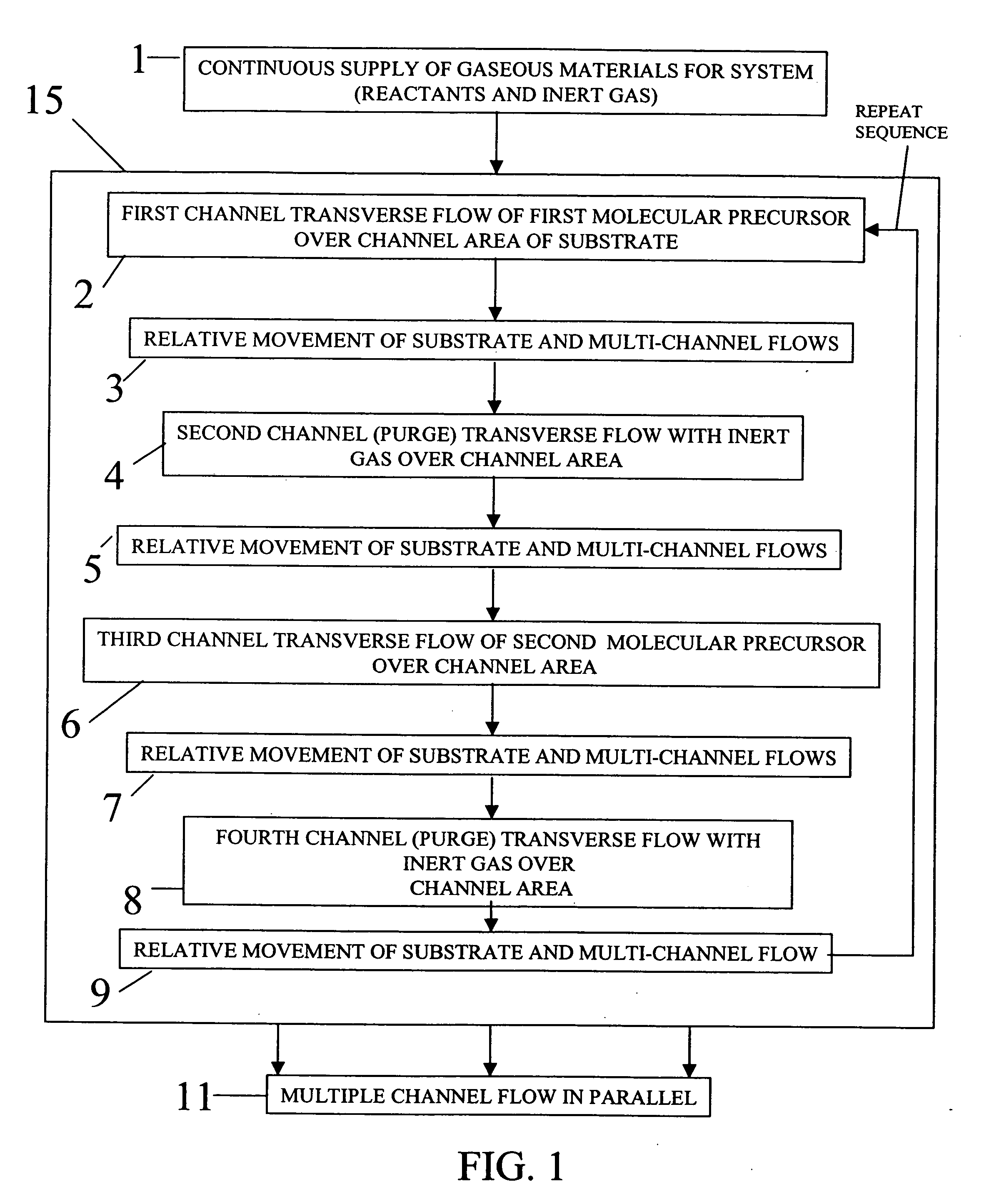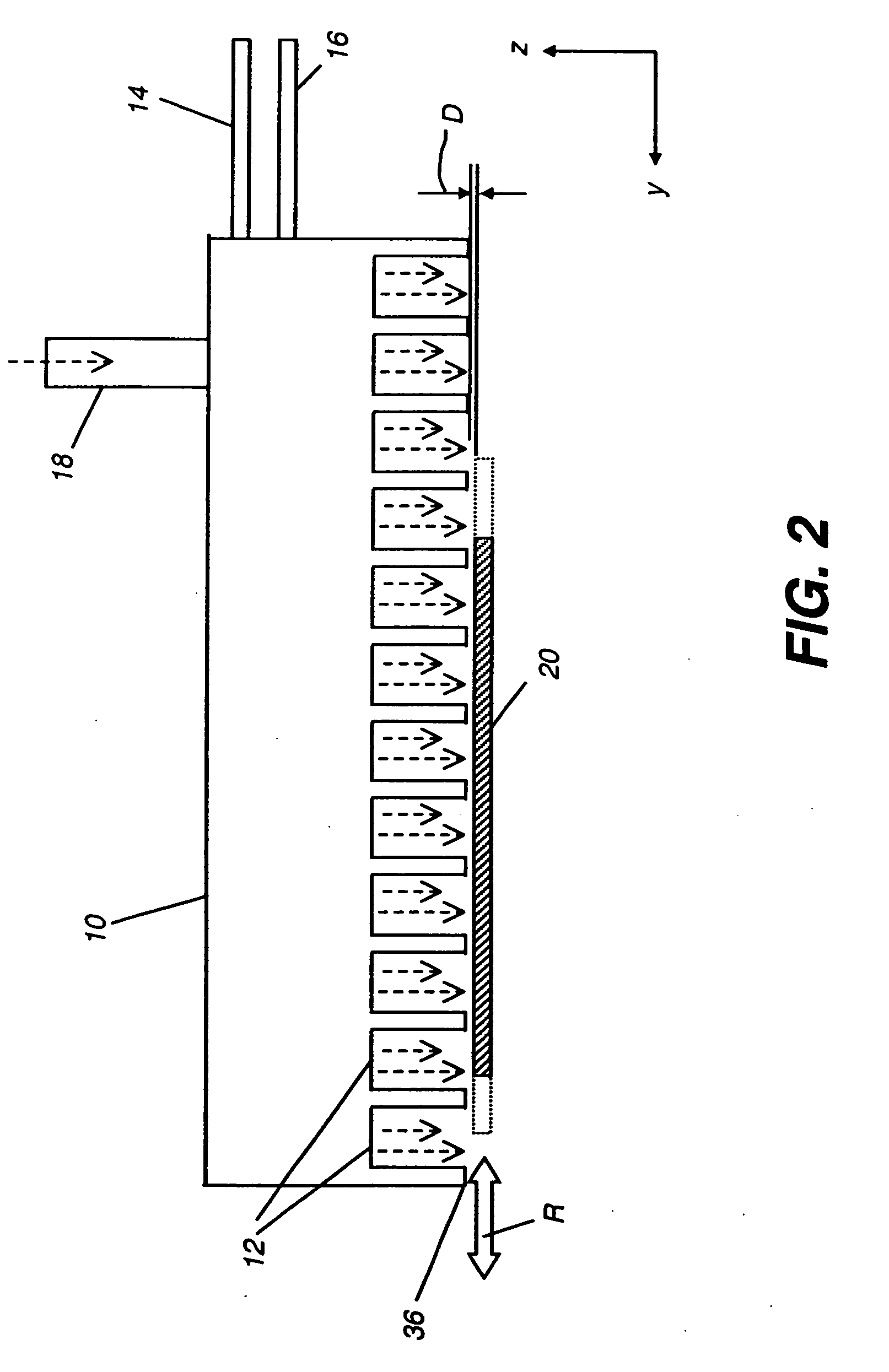Process for atomic layer deposition
a technology of atomic layer and deposition method, which is applied in the direction of chemical vapor deposition coating, coating, additive manufacturing apparatus, etc., can solve the problems of insensitive to transport non-uniformities, difficult to avoid some direct reaction of different precursors, and impair surface uniformity
- Summary
- Abstract
- Description
- Claims
- Application Information
AI Technical Summary
Benefits of technology
Problems solved by technology
Method used
Image
Examples
example 1
[0141] This example shows the production of a zinc oxide semiconductor film according to the present invention used to produce a working thin film transistor. In this structure, the gate of the device is a heavily doped silicon wafer, and the insulator is a film of silicon dioxide grown by a thermal process on the silicon wafer prior to deposition of the zinc oxide semiconducting film.
[0142] The zinc oxide semiconductor layer was applied using the inventive deposition system. Two runs were made with the substrate temperature at 200° C. and the following conditions:
TABLE 1MetalDiethylzincPrecursorWaterOxidizerNitrogenBubblerDilutionAirBubblerDilutionPurgeBlowFlowFlowFlowFlowFlowSample(sccm)(sccm)(sccm)(sccm)(sccm)(sccm)Cycles1-A1062051010001500401-B 56205 51000150040
[0143] After deposition of the zinc oxide, aluminum contacts were applied to the above devices by evaporation through a shadow mask to a thickness of 500 A. The shadow mask produced devices with a channel width of 500 ...
example 2
[0145] This example shows the production of aluminum oxide films according to the present invention, demonstrating the capability to make high quality insulating films with good breakdown voltage. In this structure, a bare silicon wafer is used as one electrode on which is grown a film of aluminum oxide using the inventive equipment described above.
[0146] The aluminum oxide layers were applied with the substrate at 200° C. and the following deposition conditions, where 2-B is a replicate data point.
TABLE 3Trimethyl-MetalAluminumPrecursorWaterOxidizerNitrogenBubblerDilutionAirBubblerDilutionPurgeBlowFlowFlowFlowFlowFlowSample(sccm)(sccm)(sccm)(sccm)(sccm)(sccm)Cycles2-A106201010110015001002-B106201010110015001002-C106201010110015002002-D20620102011001500100
[0147] After deposition of the aluminum oxide, samples were measured for thickness and refractive index using ellipsometry. After that, aluminum contact pads were applied to the top of the sample D film using shadow mask evapora...
example 3
[0149] This example shows the production of a working transistor device using heavily doped silicon as the gate material but then employing Al2O3 as the dielectric and ZnO as the semiconductor, in which both of the latter materials are deposited using the present invention.
[0150] The aluminum oxide films were deposited first according to following conditions:
TABLE 5Trimethyl-MetalAluminumPrecursorWaterOxidizerNitrogenBubblerDilutionAirBubblerDilutionPurgeFlowFlowFlowFlowFlowFlowSample(sccm)(sccm)(sccm)(sccm)(sccm)(sccm)Cycles3-A25620102011001500803-B2562010201100150060
[0151] After the aluminum oxide deposition, both samples were coated using the above apparatus with ZnO according to the following conditions:
TABLE 6Diethyl-MetalzincPrecursorWaterOxidizerNitrogenBubblerDilutionAirBubblerDilutionPurgeFlowFlowFlowFlowFlowFlow(sccm)(sccm)(sccm)(sccm)(sccm)(sccm)Cycles56205101000150020
[0152] Aluminum contacts were evaporated on the resulting multilayer device through a shadow mask, y...
PUM
| Property | Measurement | Unit |
|---|---|---|
| speed | aaaaa | aaaaa |
| temperature | aaaaa | aaaaa |
| distance | aaaaa | aaaaa |
Abstract
Description
Claims
Application Information
 Login to View More
Login to View More - R&D
- Intellectual Property
- Life Sciences
- Materials
- Tech Scout
- Unparalleled Data Quality
- Higher Quality Content
- 60% Fewer Hallucinations
Browse by: Latest US Patents, China's latest patents, Technical Efficacy Thesaurus, Application Domain, Technology Topic, Popular Technical Reports.
© 2025 PatSnap. All rights reserved.Legal|Privacy policy|Modern Slavery Act Transparency Statement|Sitemap|About US| Contact US: help@patsnap.com



